I've made a fast and full example on this :
<Window x:Class="ParentDataContext.MainWindow"
xmlns="http://schemas.microsoft.com/winfx/2006/xaml/presentation"
xmlns:x="http://schemas.microsoft.com/winfx/2006/xaml"
Title="MainWindow" Height="350" Width="525">
<Grid>
<DataGrid ItemsSource="{Binding items}" AutoGenerateColumns="False">
<DataGrid.Columns>
<DataGridTemplateColumn>
<DataGridTemplateColumn.CellTemplate>
<DataTemplate>
<StackPanel Orientation="Horizontal">
<CheckBox IsChecked="{Binding IsChecked}"></CheckBox>
<TextBlock Margin="5"
Text="{Binding Path=DataContext.TextFromParent,RelativeSource={RelativeSource AncestorType={x:Type Window}}}"/>
</StackPanel>
</DataTemplate>
</DataGridTemplateColumn.CellTemplate>
</DataGridTemplateColumn>
</DataGrid.Columns>
</DataGrid>
</Grid>
The context for each row is set to each object from the bound list. In our case, to each Model instance from the items collection.
To go back to the parent's DataContext this syntax is used:
Text="{Binding Path=DataContext.TextFromParent,RelativeSource={RelativeSource AncestorType={x:Type Window}}}"/>
Here is the codebehind:
public partial class MainWindow : Window
{
public string TextFromParent
{
get { return (string)GetValue(TextFromParentProperty); }
set { SetValue(TextFromParentProperty, value); }
}
// Using a DependencyProperty as the backing store for TextFromParent. This enables animation, styling, binding, etc...
public static readonly DependencyProperty TextFromParentProperty =
DependencyProperty.Register("TextFromParent", typeof(string), typeof(MainWindow), new PropertyMetadata(string.Empty));
public ObservableCollection<Model> items { get; set; }
public MainWindow()
{
InitializeComponent();
items = new ObservableCollection<Model>();
items.Add(new Model() { IsChecked = true });
items.Add(new Model() { IsChecked = false });
items.Add(new Model() { IsChecked = true });
items.Add(new Model() { IsChecked = false });
TextFromParent = "test";
this.DataContext = this;
}
}
You can define your dependency property in your ViewModel.
And here is my simple Model:
public class Model : INotifyPropertyChanged
{
private bool _IsChecked;
public bool IsChecked
{
get { return _IsChecked; }
set
{
_IsChecked = value;
PropertyChanged(this, new PropertyChangedEventArgs("IsChecked"));
}
}
public event PropertyChangedEventHandler PropertyChanged = delegate { };
}
As a result, you can access the property defined on your parent's DataContext.

